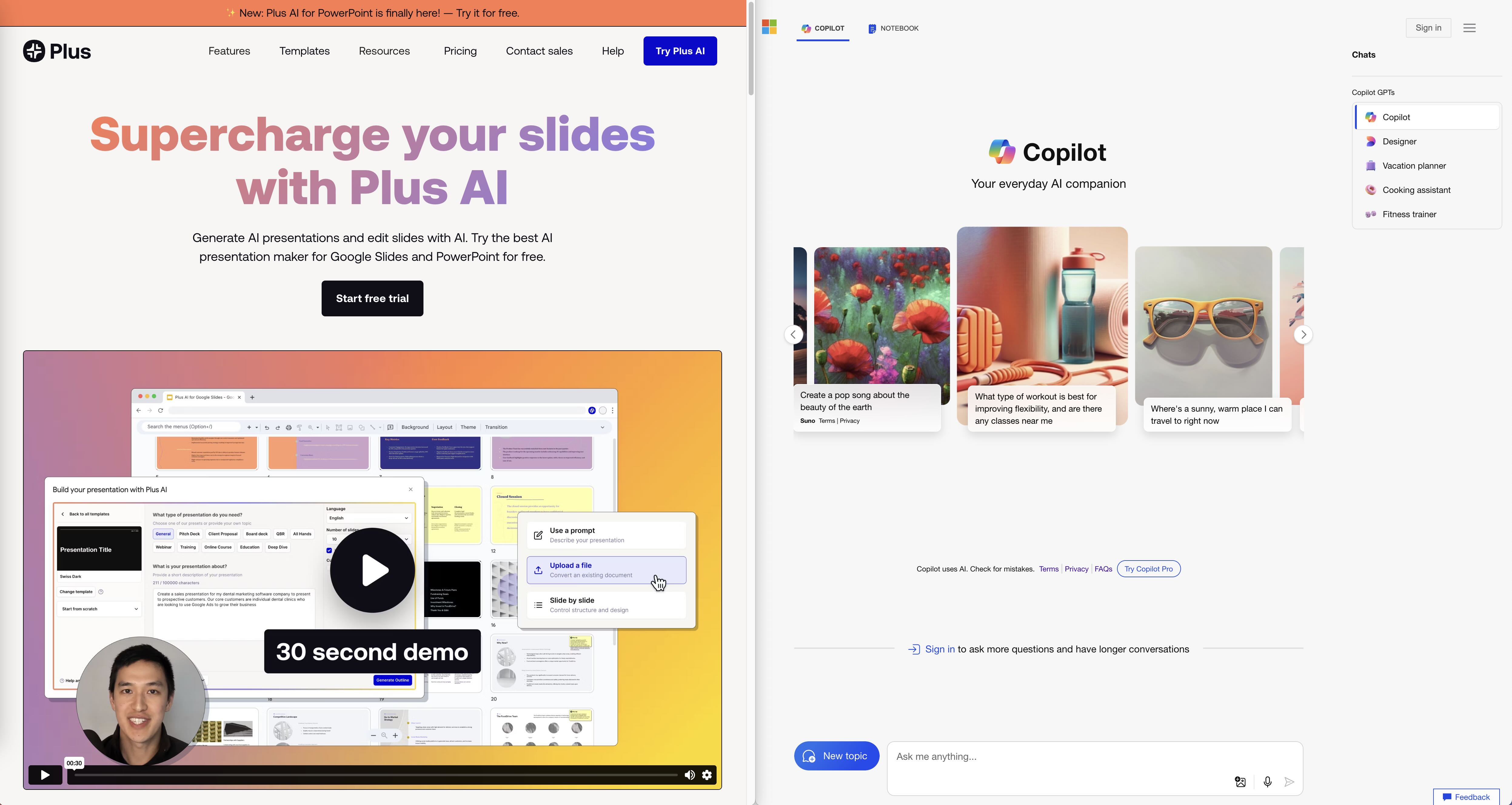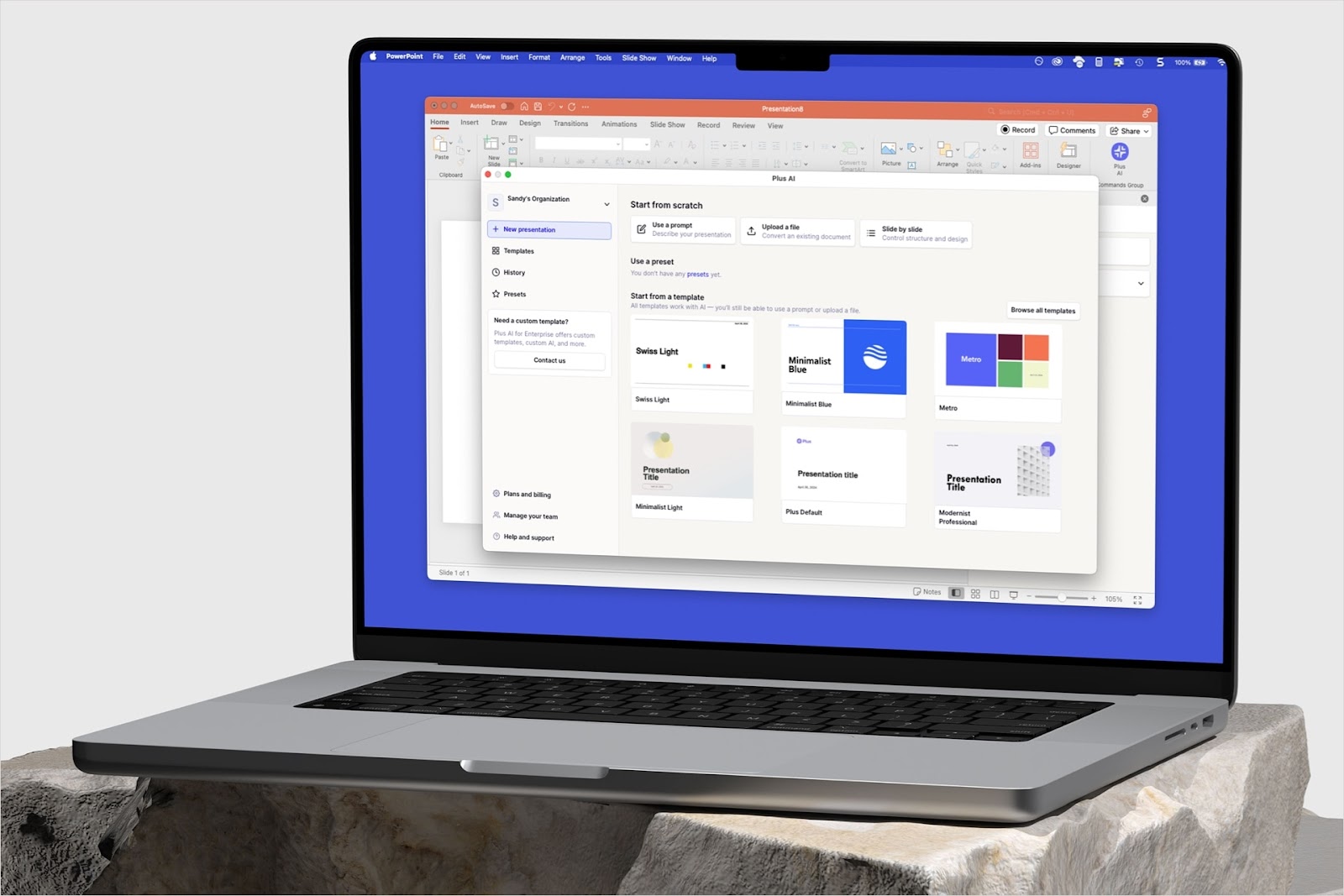At Plus, we believe you have to build a great company (people, culture, values) in order to build a great product. We also believe the best team we can build is a fully remote one — our 12 team members live in 8 different cities today — because it affords our team members maximum flexibility in their lives, while enabling us to work with the best people wherever they might live. But being fully remote can make it harder to both get to know each other as people, and to cultivate and maintain our company culture.
With more companies considering, or fully committing to, a remote-first model, we wanted to share some of what we do to make remote work… work! Here are some of the things we do to build a remote-first culture that feels productive, engaging, and connected.
Be deliberate about getting to know each other
Since we work remotely, we miss out on the informal hallway and lunch table conversations that happen organically in an office. To compensate for that, we intentionally design and set aside time for team rituals that help us get to know each other as people.
For example, we start every “All Team” meeting by discussing everyone’s answers to an icebreaker, like, “Aliens come to Earth. Who do you call to represent humanity for first contact?” We come up with questions that are open-ended and thought-provoking, lead to clarifying questions (”How menacing does the spaceship look?” “Does the person have to actually be in your phone book?”), and leave room for both silly and serious responses. These discussions usually go for 15 to 20 minutes — they could easily go longer — but we’ve found they are well worth the time.
We also have an optional “Happy Hour” on Fridays with a rotating set of activities. We schedule this at a time that is convenient for all time zones (being on the West Coast, that means this doubles as my lunchtime!). When new folks join, we’ll do a Q&A with our greatest hits icebreakers. Sometimes individuals will prepare lunch & learns or AMAs on something they do outside of work (previous topics: Dungeons and Dragons, drift racing, how to decode Emojis). Often we’ll play a virtual-friendly game; lately we’ve been into GeoGuessr (”Which Hard Rock Cafe in the world is this?”).
Do more asynchronously
In addition to being deliberate about things that are more challenging in a remote environment, we also try to take advantage of our ability (and the necessity) to work more asynchronously.
To share work, frame discussions, and make recommendations, we write a lot of documents and record Loom presentations, ask for asynchronous feedback, and then schedule a meeting for discussion and decision only if still needed.
Not only do we find that these docs and presentations make it easier to collaborate across time zones, we’ve also found that their preparation forces the author to clarify and structure their ideas. Collaborators also benefit from having more time to reflect on and craft their comments, leading to better outcomes. When we do meet live, everyone already has context, and the meetings are more efficient.
What’s more, we rarely need to retread previous discussions or re-litigate prior decisions; we naturally generate robust and easy-to-find documentation that captures both the conclusions and supporting rationale. Finally, nobody gets left out of the context of a decision because they missed a meeting or hallway conversation. They can always watch a Loom video or catch up by reading a discussion thread.
Make implicit norms and expectations explicit
This is a useful principle for in-person teams as well, but we’ve found it especially helpful as a remote team to write down our norms and expectations (as individuals, as a sub-team, as a company), so others don’t have to guess.
We ask everyone on the team to create and maintain a “User Guide” (here’s Dan’s!) that describes how we like to work and collaborate as individuals (e.g., “I need to be offline every day at 5PM sharp to pick up my kid,” “I prefer to have something to read and respond to vs. a live question on the spot,” “Ping me in Slack with real time feedback, no need to wait for a formal 1-1”). To make sure they don’t get out of date, we set aside time periodically, like at our last offsite, for people to revisit their user guides.
We also maintain living documents that describe our communication norms (e.g., guidelines for using Slack, when to use Slack vs. write a document, how to communicate your working hours) and tips and tricks for working efficiently with our tools (e.g., how to minimize Slack noise). This is great for codifying and iterating on how we work together as a team, and meaningfully eases (and accelerates) the onboarding of new members of the team.

Get together in person, sometimes
As much as we invest time and energy into creating a great remote work environment, we recognize there are some aspects of being together in person that are hard or impossible to replicate. So recently, we got together IRL. We designed the agenda at our first offsite to focus exclusively on the things that are hard to do over Zoom: visioning, brainstorming, refining our culture and values, and enjoying one another’s company as fun, engaging people!
Going forward, we're planning to try something in-person every quarter or two, but we will mix up the format throughout the year, e.g., an offsite, a retreat, and an optional co-working week in between.
Finally, here’s a silly moment from a recent engineering meeting. We’ve tried to be deliberate and thoughtful when designing our remote team culture, but just as often, culture emerges spontaneously from the individuals on the team 🤗. Be open to it, and celebrate it!
If you’d like to hear more about how Plus builds (what we think is!) a great remote-first culture, or to share how your team does so, message me on LinkedIn. And if you’re interested in joining Plus’s team, we’re hiring!








